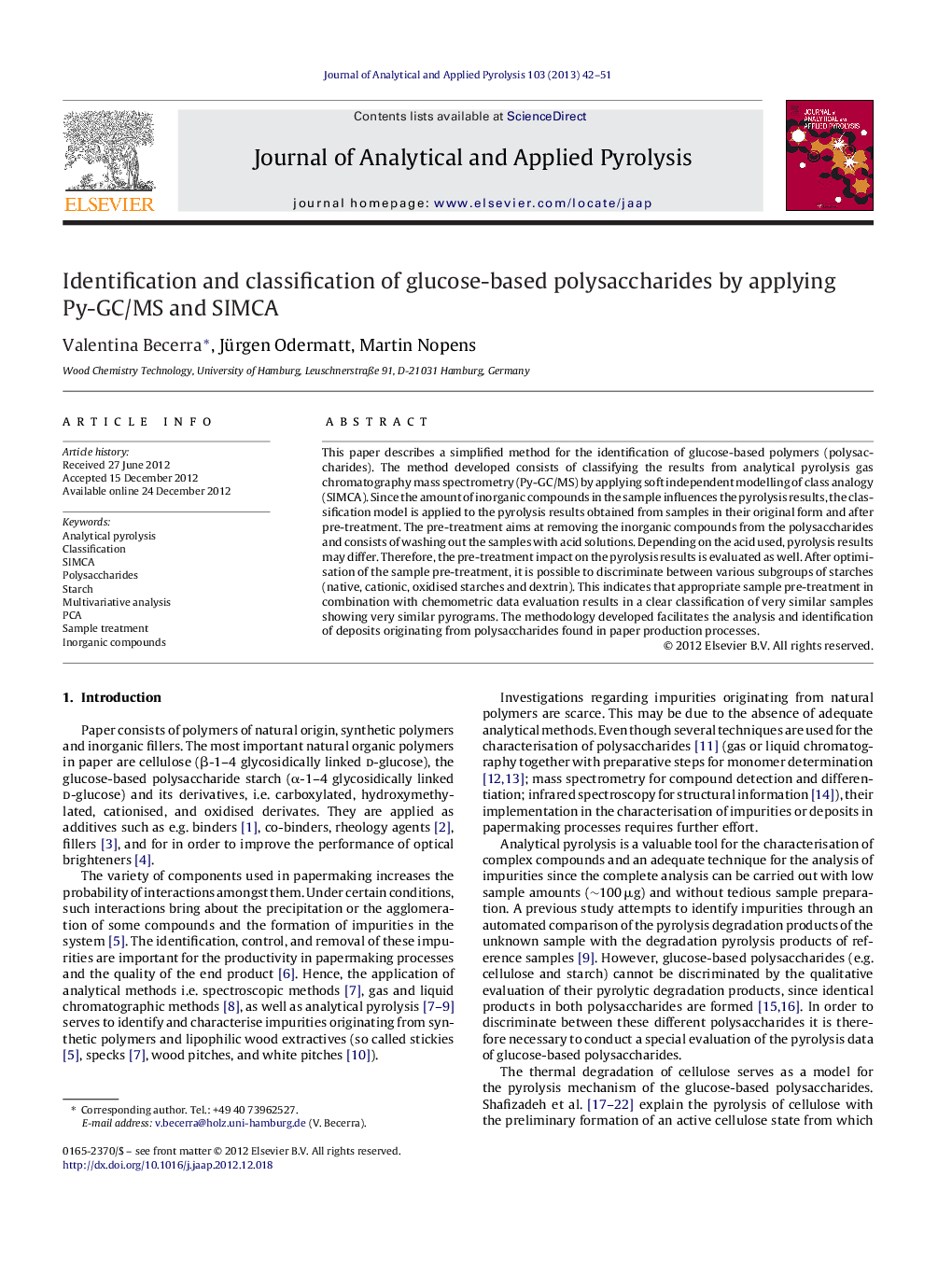| Article ID | Journal | Published Year | Pages | File Type |
|---|---|---|---|---|
| 1197168 | Journal of Analytical and Applied Pyrolysis | 2013 | 10 Pages |
This paper describes a simplified method for the identification of glucose-based polymers (polysaccharides). The method developed consists of classifying the results from analytical pyrolysis gas chromatography mass spectrometry (Py-GC/MS) by applying soft independent modelling of class analogy (SIMCA). Since the amount of inorganic compounds in the sample influences the pyrolysis results, the classification model is applied to the pyrolysis results obtained from samples in their original form and after pre-treatment. The pre-treatment aims at removing the inorganic compounds from the polysaccharides and consists of washing out the samples with acid solutions. Depending on the acid used, pyrolysis results may differ. Therefore, the pre-treatment impact on the pyrolysis results is evaluated as well. After optimisation of the sample pre-treatment, it is possible to discriminate between various subgroups of starches (native, cationic, oxidised starches and dextrin). This indicates that appropriate sample pre-treatment in combination with chemometric data evaluation results in a clear classification of very similar samples showing very similar pyrograms. The methodology developed facilitates the analysis and identification of deposits originating from polysaccharides found in paper production processes.
► Glucose-based polysaccharides are classified based on their pyrolysis results. ► Classification is done by means of implementing soft independent modelling of class analogy (SIMCA) based on pyrolysis results. ► The classification ability of the pyrolysis results of original polysaccharides and after their treatment is examined. ► Pyrolysis product distribution varies depending on the treatment (acid solution). ► After treatment, the accurate classification by SIMCA is facilitated.
